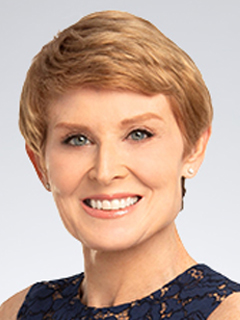Fed’s favored inflation measure subdued
An increase in prices at the grocery store offset a sideways movement in energy costs.

August 30, 2024
The personal consumption expenditure (PCE) index rose 0.2% in July, a slight uptick from 0.1% in June. The dispersion of price hikes has fallen dramatically in recent months, closer to the norms we saw in 2019. Data for the second quarter was revised down, which makes this figure all the more palatable for the Federal Reserve. The PCE deflator rose 2.5% from a year ago, the same as June.
The year-over-year figures get harder (larger) as we move into the second half due to a sharp deceleration in the second half of 2023. Federal Reserve Chairman Jay Powell has warned that those “base effects,” as they are called, will buoy year-over-year measures of inflation through year-end. Those base effects drop out of the data at the start of 2025, which is why we don’t need a big improvement in inflation on a monthly basis from here to get much closer to the Fed’s 2% target in early 2025.
An increase in prices at the grocery store offset a sideways movement in energy costs. Prices at the grocery store rose 0.2% during the month, the fastest pace since January. Prices of eggs and meat drove the increases. Bird flu is pushing up prices, while there was a listeria outbreak in deli products.
The core PCE (excluding food and energy) rose 0.2% in June, the same as in June. Again, the data for May and June were revised down modestly. The core PCE rose 2.6% from a year ago, the same as May and June. The base effects are larger in the core than they are for the overall PCE deflator. The fact that the core PCE has not risen yet is good news.
Discounting was largest in big-ticket durable goods, which dropped in price for the fourth consecutive month. Non-durable goods prices outside of the food sector showed signs of discounting as well. The biggest discounts were for clothing. Sales returned in July.
The super core services measure of the PCE rose 0.2%, the same as June but a slight uptick from May. Downward revisions to earlier months made the comparison harder. The largest increases were in: streaming services, which boosted their fees dramatically, portfolio management and investment advice, daycare and legal services. The surge in daycare costs is particularly hard on younger families and is showing up in the employment data as work missed due to childcare problems. Those figures tend to spike when schools close for holidays and the summer break.
Personal care services fell 1.3% during the month, the first decline since October 2023 and the largest drop since May 2022 and the second largest monthly drop on record. That includes spas and dating services.
Healthcare services posted the first decline since January 2023. Hospital and physician services led that weakness. Transportation services fell for the fourth month in a row. Even motor vehicle and repairs fell. Insurance costs were more mixed. Life insurance fell, health insurance was flat, while homeowner and motor vehicle insurance rose but at a slower pace than we saw earlier in the year.
Spending picks up more than income; savings plummets
Personal consumer expenditures rose 0.4% after adjusting for inflation in July. That is well in-line with the solid gains we saw in May and June. Spending on big-ticket durables drove those gains. Vehicle sales picked up after a major hack at dealers suppressed sales in the end of June. Discounting was also a factor. Prices have cooled on everything from vehicles to furniture and appliances.
Older homeowners (those over 50) have begun to tap their home equity lines of credit to remodel and repair their homes. Those homeowners were the most sheltered from rate hikes. Many intend to age in place, which is further constraining the supply of homes for sale at any given time.
Personal disposable incomes rose only 0.1% after adjusting for inflation in July, the same as last month. The surge in spending pushed the saving rate down to 2.9%, the lowest since June 2022 when inflation hit its peak. That is down 1.1% since January alone and suggests that some households are now running on fumes. The only other time that the saving rate hovered in those levels was during the subprime housing crisis, when people used the equity in their homes as an ATM.
Wages are growing faster than inflation, which is helping to support spending. However, the Fed is beginning to get concerned over the pace at which we can continue to generate paychecks. We are seeing advertised wages cool. Firms have cut the pay for many entry-level, college graduate positions. Those are trends that the Fed wants to prevent from snowballing.
Wages are growing faster than inflation, which is helping to support spending.
Diane Swonk, KPMG Chief Economist
Bottom Line:
Consumers continued to spend in response to discounting in July. They dipped into their savings to do so. The Fed welcomes growth on the heels of discounting but wants to cut rates before that discounting triggers a surge in layoffs. Those shifts have already prompted Federal Reserve Chairman Jay Powell to shift the risks the Fed is hedging from inflation to a weaker labor market. We have maintained our view that the Fed will cut by a half percentage point in September, as Chairman Powell moves to secure his legacy and nail a soft landing. That is more than financial markets are currently expecting; about 70% expect a quarter point rate cut; 30% expect a half percentage point cut.
Explore more

KPMG Economics
A source for unbiased economic intelligence to help improve strategic decision-making.

An Olympic challenge: Prospects for a soft landing vs. a recession
Higher productivity enables firms to absorb higher costs and discounts, without turning to layoffs.
Subscribe to insights from KPMG Economics
KPMG Economics distributes a wide selection of insight and analysis to help businesses make informed decisions.
Meet our team
